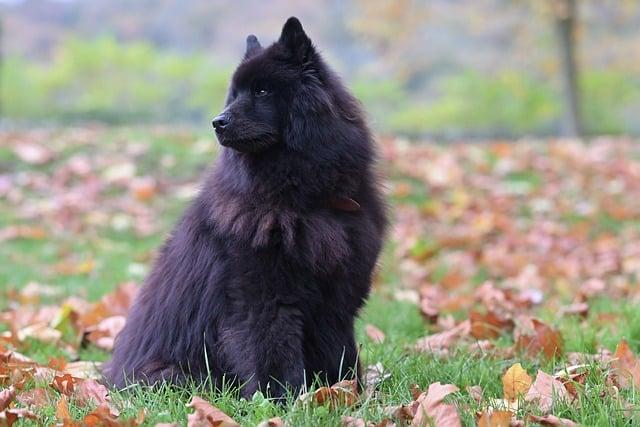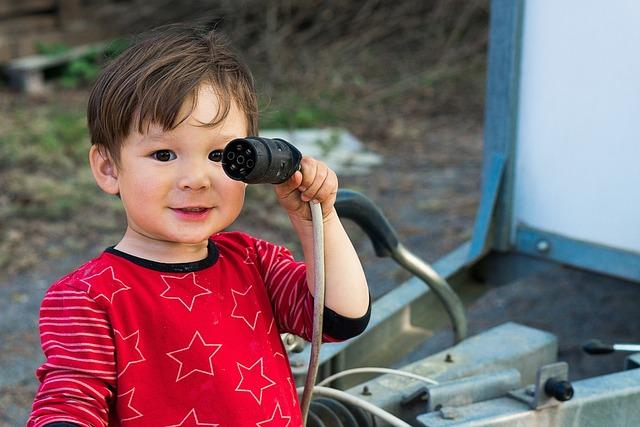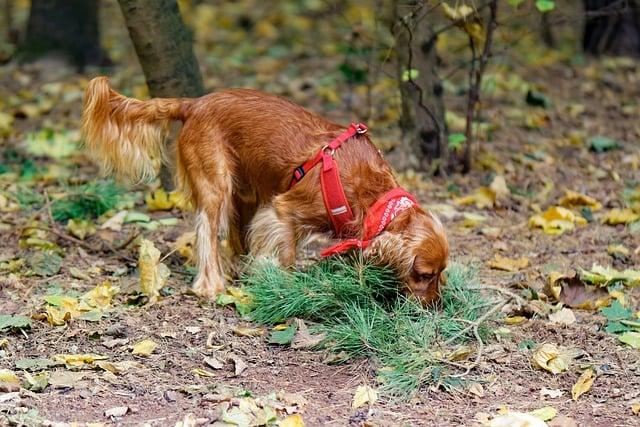Max, a spirited golden retriever, trembled at the sound of thunder. His owner, Sarah, felt helpless watching him cower in fear. Determined to help, she sought professional guidance. With gradual desensitization, calming techniques, and positive reinforcement, Max learned to associate storms with treats and playtime. Over time, his anxiety faded, replaced by confidence. If you’re struggling with a nervous dog, remember: patience and the right approach can transform fear into joy. Don’t let anxiety hold your furry friend back—take action today!
Contents
- Understanding the Root Causes of Anxiety in Dogs
- Effective Training Techniques to Alleviate Canine Anxiety
- Creating a Safe and Comfortable Environment for Your Dog
- Utilizing Professional Help and Resources for Long-Term Solutions
- Q&A
Understanding the Root Causes of Anxiety in Dogs
Understanding the underlying factors that contribute to anxiety in dogs is essential for effective intervention. Various elements can trigger anxiety, and recognizing these can help pet owners tailor their approach to their furry companions. Common causes include:
- Genetics: Some breeds are more predisposed to anxiety due to their genetic makeup.
- Early Experiences: Negative experiences during critical developmental periods can lead to long-lasting anxiety.
- Environmental Changes: Moving to a new home, changes in family dynamics, or the introduction of new pets can create stress.
- Lack of Socialization: Insufficient exposure to different people, animals, and environments can result in fearfulness.
Additionally, physical health issues can exacerbate anxiety in dogs. Conditions such as chronic pain, hormonal imbalances, or neurological disorders can manifest as anxiety-related behaviors. It is crucial to consult with a veterinarian to rule out any medical concerns that may be contributing to your dog’s anxiety. A thorough health assessment can provide insights into whether the anxiety is purely behavioral or if it has a physiological component.
Behavioral triggers also play a significant role in a dog’s anxiety. Loud noises, such as thunderstorms or fireworks, can instill fear in many dogs. Similarly, separation anxiety is a common issue that arises when dogs are left alone for extended periods. Identifying specific triggers in your dog’s environment can help you develop a targeted strategy to alleviate their anxiety. Keeping a journal of your dog’s behavior can assist in pinpointing these triggers and understanding their patterns.
the role of the owner’s behavior cannot be overlooked. Dogs are highly attuned to their human’s emotions and reactions. If an owner exhibits anxiety or stress, their dog may mirror these feelings. Establishing a calm and reassuring presence can significantly impact a dog’s emotional state. Training techniques that promote positive reinforcement and gradual exposure to anxiety-inducing situations can foster resilience and confidence in your dog, ultimately leading to a more relaxed and happy companion.
Effective Training Techniques to Alleviate Canine Anxiety
When addressing canine anxiety, implementing effective training techniques is crucial for fostering a sense of security and calm in your dog. One of the most impactful methods is **desensitization**. This involves gradually exposing your dog to the anxiety-inducing stimuli in a controlled manner, allowing them to acclimate without feeling overwhelmed. Start with low-intensity exposure and slowly increase the intensity as your dog becomes more comfortable. This process helps to rewire their emotional response, reducing anxiety over time.
Another powerful technique is **counter-conditioning**, which pairs the anxiety-triggering situation with something positive. For instance, if your dog is anxious during thunderstorms, you can create a safe space filled with their favorite toys and treats. When a storm occurs, lead them to this space and provide treats or engage in play. This association helps your dog to link the previously frightening experience with positive outcomes, gradually diminishing their fear.
Incorporating **positive reinforcement** into your training regimen can also yield significant results. Reward your dog for calm behavior in situations that typically provoke anxiety. Use treats, praise, or playtime as incentives for maintaining composure. This not only encourages your dog to exhibit calm behavior but also strengthens the bond between you and your pet, fostering trust and security.
Lastly, consider integrating **relaxation techniques** into your training routine. Activities such as gentle massage, calming music, or even aromatherapy can help soothe an anxious dog. Teaching your dog to settle on command can also be beneficial; practice this in a quiet environment and gradually introduce it in more stimulating situations. By equipping your dog with tools to manage their anxiety, you empower them to navigate their world with confidence.
Creating a Safe and Comfortable Environment for Your Dog
Creating a nurturing atmosphere for your dog is essential in alleviating anxiety. Dogs thrive in environments where they feel secure and loved. To achieve this, consider the following elements:
- Safe Space: Designate a specific area in your home where your dog can retreat when feeling overwhelmed. This could be a cozy corner with their bed, toys, and blankets, providing a sense of ownership and comfort.
- Consistent Routine: Establishing a daily routine can significantly reduce anxiety. Regular feeding, walking, and playtime schedules help your dog anticipate what comes next, fostering a sense of stability.
- Positive Reinforcement: Use treats and praise to reward calm behavior. This not only encourages your dog to relax but also strengthens your bond, making them feel more secure in your presence.
- Calming Products: Consider incorporating calming aids such as pheromone diffusers, anxiety wraps, or soothing music designed for dogs. These tools can create a tranquil environment that helps ease their stress.
Environmental factors play a crucial role in your dog’s emotional well-being. Ensure that your home is free from loud noises and sudden disturbances that could trigger anxiety. If your dog is particularly sensitive to sounds, consider using white noise machines or soundproofing certain areas of your home. Additionally, keeping the environment clean and organized can prevent your dog from feeling overwhelmed by clutter.
Socialization is another vital aspect of creating a comfortable environment. Gradually introduce your dog to new people, pets, and experiences in a controlled manner. This exposure helps them build confidence and reduces fear of the unknown. Always monitor their reactions and provide reassurance, allowing them to explore at their own pace.
Lastly, prioritize your dog’s physical and mental stimulation. Regular exercise not only helps burn off excess energy but also promotes relaxation. Engage in interactive play, puzzle toys, or training sessions that challenge their mind. A well-exercised dog is often a calmer dog, making it easier for them to cope with anxiety-inducing situations.
Utilizing Professional Help and Resources for Long-Term Solutions
When addressing anxiety in dogs, enlisting the help of professionals can be a game-changer. Veterinarians, particularly those specializing in animal behavior, can provide invaluable insights into your dog’s specific issues. They may recommend behavioral therapies or, in some cases, medication to help alleviate anxiety symptoms. Consulting with a professional ensures that you are taking a well-rounded approach tailored to your dog’s unique needs.
In addition to veterinary guidance, working with a certified dog trainer or behaviorist can significantly enhance your efforts. These experts can offer personalized training programs that focus on desensitization and counter-conditioning techniques. By utilizing their expertise, you can create a structured environment that fosters confidence and security in your dog. Look for trainers who use positive reinforcement methods, as these are proven to be effective and humane.
Support groups and online communities can also serve as excellent resources for dog owners dealing with anxiety issues. Engaging with others who share similar experiences can provide emotional support and practical advice. Many of these platforms offer a wealth of information, including success stories, tips, and recommended products that have worked for other pet owners. Connecting with a community can help you feel less isolated in your journey and empower you with new strategies.
don’t overlook the value of educational resources such as books, webinars, and workshops focused on canine behavior and anxiety management. These materials can deepen your understanding of your dog’s needs and equip you with effective tools to implement at home. Investing time in learning about anxiety in dogs not only benefits your pet but also strengthens the bond between you and your furry companion, paving the way for a happier, more relaxed life together.
Q&A
-
What are the signs of anxiety in dogs?
Common signs of anxiety in dogs include:
- Excessive barking or howling
- Destructive behavior
- Excessive licking or chewing
- Restlessness or pacing
- Avoidance of certain situations or people
-
How can I create a calming environment for my dog?
To help your dog feel more secure, consider the following:
- Provide a safe space with comfortable bedding
- Use calming scents, such as lavender
- Maintain a consistent routine
- Limit exposure to loud noises or chaotic environments
-
Are there any training techniques to reduce anxiety?
Yes, effective training techniques include:
- Desensitization: Gradually exposing your dog to anxiety triggers
- Counter-conditioning: Associating positive experiences with anxiety triggers
- Basic obedience training: Building confidence through commands
-
When should I consult a veterinarian about my dog’s anxiety?
If your dog’s anxiety is severe or persistent, it’s essential to consult a veterinarian. Signs that warrant a visit include:
- Inability to cope with daily activities
- Physical symptoms like vomiting or diarrhea
- Escalating destructive behavior
- Signs of aggression or extreme fear
addressing your dog’s anxiety requires patience, understanding, and the right strategies. By implementing these techniques, you can foster a calmer, happier environment for your furry friend. Invest in their well-being today for a brighter tomorrow.

大家好,我是彼得潘,專業的手法身體治療師。我喜歡探索和研究各種主題,並透過與人工智慧的合作分享專業、實用、有趣的文章。我們定期進行人工審核,以確保內容的準確性。如果您發現文章中有任何不準確的地方,請隨時與我們聯繫,我們會及時糾正。您可以透過 [email protected] 與我們聯繫。



